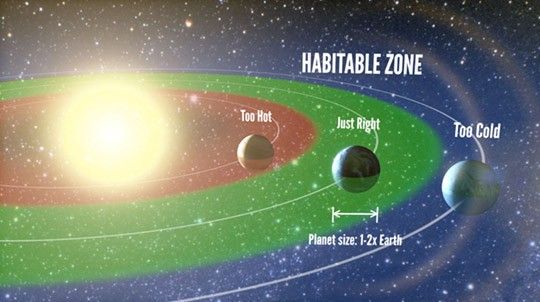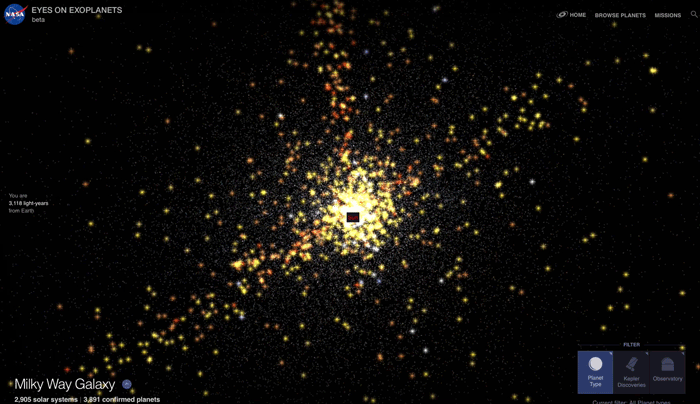Introductory Guiding Question
How can life exist on Earth?
Big Idea 2.1
Educator Background
-
Earth is the only place in the universe that we know of where life exists. Life exists on Earth because of many important factors: we have the perfect-sized star to live next to, we are the perfect distance from the Sun , it's not too hot or too cold, and we have liquid water. It is no surprise we call the place where Earth is located the "Goldilocks Zone" or the "Habitable Zone." Earth also has an atmosphere and a magnetosphere, which form protective layers around Earth.
-
Learning Constraints
At this level students know that plants need sunlight and water to grow (2-LS2-1) and begin to learn about the energy flow from the Sun to plants, and then to other organisms in the ecosystem (K-LS1-1)(5-LS1-1). Students at this level are also familiar with the planets in the solar system and that most places are far too cold or too hot to live! As they progress, students will also be able to articulate which objects in the solar system have atmospheres and magnetospheres, and which do not. For example, students know that they can't breathe on the Moon or Mars.
-
Connect to Heliophysics
Connect to the Sun by emphasizing the uniqueness of Earth's position in the solar system, within the Goldilocks Zone. Not only are we unique in our solar system, but unique in the universe. NASA looks for evidence of life on planets around other stars, and so far, we have not found another planet like Earth. Both Venus and Mars are in the Goldilocks Zone, but Mars doesn't have a very robust atmosphere and it is too cold for most organisms. Venus has a toxic atmosphere and has extremely hot temperatures. The Earth is very, very special.
-
Extend Exploration
Extend student exploration by investigating extremophiles on Earth that can live in extreme environments. For example, bacteria that can survive in boiling acid. Scientists think that if life exists elsewhere in the universe, it may be an extremophile. But even the most extreme organisms on Earth rely on water to live, even if it is a very small amount. So scientists look for the existence of water on other planets, with the hope that someday we will discover some sort of life there.
-
Differentiate for Beginner Learners
Support younger students by emphasizing the need for both sunlight and water for plants to grow.
-
Differentiate for More Advanced Learners
Challenge students at the next level by exploring the flow of solar energy into plants, which are then consumed in other parts of the ecosystem.

What is the Habitable Zone?
Video Length: 2:20
Search the Resource Database for more videosRecommended Resources
Explore this guiding question with these featured resources.
Heliophysics Resouce Database
Use the guiding question above to explore resources at this level or go directly to our database to search for resources by level, NGSS performance expectation, topic, and mission.
Resource Data Base
































